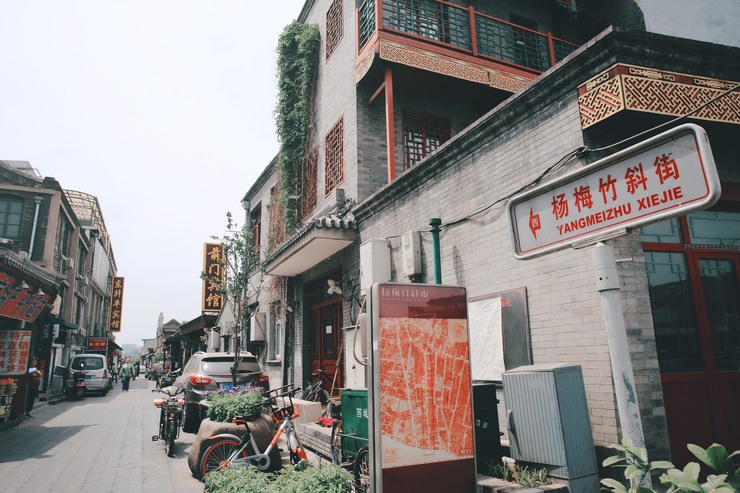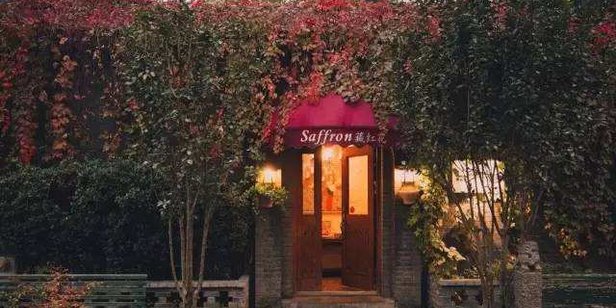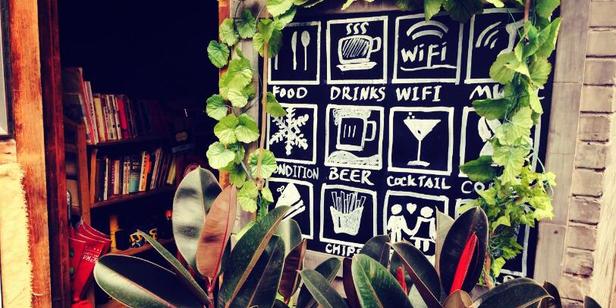The locals take you to experience Beijing's Hutongs
The goals that I (visiting Hutong) chose were more representative and preserved relatively complete hutongs. Do not know if you do not stroll, really stroll can be interesting. Let's take a look at the top of Beijing Hutong!
Beijing's Shortest Hutong - One Foot Street
Beijing's shortest alley - a foot street, merged into Yangmei Zhu Xie Street. Although it is called Street, it is actually an alley, and it is only 20 meters in length. The original six shops, three in the north are lettering shops, and three in the south are pubs, blacksmiths and barber shops.
Yangmei Zhu Xie Street, is said to have lived here a good matchmaker Yang said the marriage matchmaker Yang name, so named Yang media oblique street, and then later homonym and yahua, Yangmei bamboo oblique street.
Qingyun Pavilion, this unique building on the street, has seen a lot of eyeballs from afar. It is said that it used to be an enjoyment place for the noble officials to eat, drink, and play.
This is a few steps from start to finish, one can look at the foot of a street.
From a foot-tight street, you can reach the famous cultural street of Beijing - Liulichang Avenue, which is named after the shops selling antique calligraphy and painting.
It originated in the Qing Dynasty. At that time, all locals who came to Beijing to participate in the imperial examinations concentrated on this area. Therefore, there were more shops selling books and ink and paper, forming a more cultural atmosphere.
Not much to say, looked up and looked at the plaque, all of them are hand-painted, and they can take home a copy and learn to collect it.
The longest Hutong in Beijing - Dongjiaominxiang
Located in Dongcheng District, Beijing, Hutong starts west from Tiananmen Square East Road and east to Chongwenmen Inner Street. It is nearly 3 kilometers long and is the longest hutong in old Beijing.
Old Beijing has always said that “the east is rich, the west is poor, and the south is poor”, and the original Dongcheng people mainly lived in some businesses, so it was a place where the rich concentrated. There is no shortage of old-style western-style buildings in this Dongjiaomin Lane.
Branches swaying, Western small building stand shoulder to shoulder, time is ambiguous, things are human, the only constant is the expensive land price.
This long street is also the embassy district of old China.
Beijing's narrowest alley - Qian City Hutong
Data records: Before the end of the Qing dynasty, the money shop in the whole city, grain shops and major commercial firms had to go to the money market every morning to trade and convert silver to cash, or vice versa. Since the founding of the Republic of China, the furnace market has been declining and the city has been transformed into a silver shop. Therefore, it can be regarded as the earliest and most complete financial exchange in China. At that time, the silver on both sides of the Qian City Hutongs used legal loopholes to unrestraintly expand their business buildings and misappropriate public passages, eventually making the Qian City Hutong the narrowest alley in Beijing.
But I didn't really find this alley, I don't know whether it was narrowly out of the sky, and the satellites couldn't find it. The narrow alleyway in Beijing is indeed a lot, casually made a few full charge.
This hutong is actually called Dong Taiping Lane. The width of only one person is almost enough. I think it is narrow enough.
Beijing's widest hutong - Lingjing Hutong
If the signs on the street are clearly written: Lingjie Hutong, I am afraid that no one will regard this street as an alley, it really surpasses the width of ordinary hutongs, plus the old houses on both sides have been demolished. The asphalt road is exactly a normal, spacious street.
Lingjing Hutong is located in the prosperous Xidan business district in Xicheng District. It is on the side of Galeries Lafayette department store. This is a place where you have a lot of money. Having a chimney here is also something to be proud of.
Beijing's Most Curved Hutong - Jiuwan Hutong
This alley hides in the school camp hutong, there is no sign on the wall, one will miss it. At that time, Baidu's map suggested that the destination was nearby, but I couldn't see it. At the end, it was only discovered by the passers-by. According to information, this hutong is about 390 meters long and no less than 13 bends. It can be called the most hutong of Beijing City.
When I walked in, I discovered that it was really quiet and there were very few people. I stay here and take a picture for only half an hour to meet a puppy.
Beijing's oldest alley - brick tower alley
The roots of Beijing Hutong, the allegory of Hutong, began in the capital of Yuan Dynasty. At that time, there were 29 alleys, but there was only one hutong with written records. This hutong is a brick and hutong alley. From the Yuan, Ming, Qing, and the Republic of China to today, there are documents that can be examined. This is the only isolated case in Beijing.
There is only one bright city in the Forbidden City with its golden walls and red walls. It is the world of the royal family. There are numerous hutongs in gray walls and grey tiles. This is a living space for civilians in the city. The world of the royal family has fallen apart, and the lives of civilians continue to be continued from generation to generation. Is life better than ordinary?
The brick-tower hutong has a history of more than 700 years, but it does not feel that it is older than other old cedar trees, probably because of the later renovation work
Only this towering ancient tree can serve as a long-term evidence.
Brick and tower hutongs are also one of the best preserved hutongs with original features.
Eight-star table, wooden bench ... I will be sparse. The left-most object that is called?
The Yuanwansong Old People’s Tower is located at the mouth of the brick tower and alleys. The “brick tower” in the brick tower hutong refers to this tower. It has a history of 800 years.
Zhengyang Book Bureau, a non-profit public reading space. Pushing in the door, the time seems to have been done. The simple and retro layout, dressed in the clothes of the Republic of China, and the bookshelves are filled with simple books on Beijing history and culture. All this tells you that this is an old Beijing bookstore.
The highlight is the banana leaf fan in the corner. Old Beijingers used it to cool off and catch mosquitoes. Now that air conditioning is on the road, it is not for anyone who can see it. After many things have fulfilled their mission, it is such a quiet disappearance in the sight of people.
Beijing's most elegant alley - deep in the flowers
There are two reasons why Baihua is famous in the depths. First, its name is special. Most Beijing Hutong names are straightforward. For example, mutton hutongs, cap children hutongs, and Yuerhu equates to ordinary people's lives or experiences. Few arts like the depths of a hundred flowers, Mr. Lao She once described the depths of the flowers: "The alley is narrow and long. Both sides are made of broken brick wall. The south wall is rare daylight, thin layer of green Moss, there is a faint trace of silver on the heights where the snail crawls. Walking inwards feels a bit more spacious, but the walls on both sides are more broken.” The things that the writer writes are always expressive.
The second reason is the era of the proliferation of Chinese rock in the last century, and the depths of Hutong, "No. 16 Hutong in the depths of Xinjiekou," is where Zhang Xiaowei's studio is located. Baihua should be one of the earliest recording studios in Beijing, where many musicians tossed music and tossed dreams. This instills elements of fashion and art in the depths of the flowers.
Under the poetic name, the alleys can't be ordinary. In the afternoon sunlit streets, the lack of green shade is a bit dry and the shadows are mottled and lifeless.
Walking in the alley, looking in from many open streets, the first thing that catches the eye is all kinds of messy things or a wall of seven twists and turns. The line of sight is blocked within a few meters. This family is not the same, a rare smooth, clean, looking at my heart feel happy.
With the large number of Wenqingers living in the depths of the flowers, Xinshengkou Street's musical instruments were springing up. It was now an entire street. Now Wen Qing has moved away, but this street is still there.
Hundred flowers are not far from the Huguosi Street. There are delicious halal snacks. Unlike the old Beijing snacks, Halal snacks have their own varieties and methods of production, all vegetarian.
The steel crickets, who used to spend money before, are now just names, and nobody on the ground picks up. The name of the restaurant is interesting, it is easy to remind Beijingers of the old story.
Where is the happiness of hot days, in this bowl of smooth and refreshing jelly.
Beijing's most intimate alley - plate alley
There is no reference value. Long time ago, my grandfather's home was here. It was only different for me because the age was too small to impress the Hutong itself. The most profound thing was that there was a lacquered doorway in the mouth of the alley and it was not seen now. It was estimated that it was demolished. I wanted to take a photo with a brand name but didn't want the brand name to be nailed to the wall of the public toilet. The left male toilet card and the right female toilet card didn't give me any pictures.













































